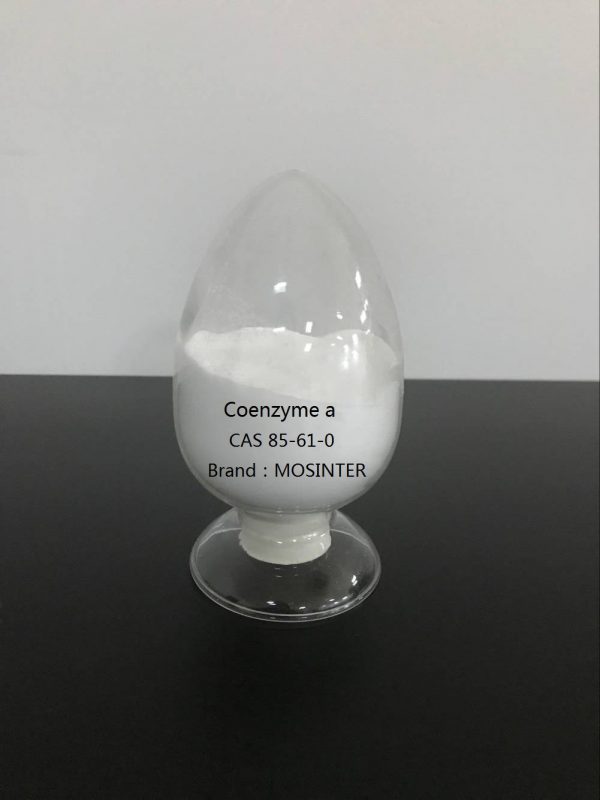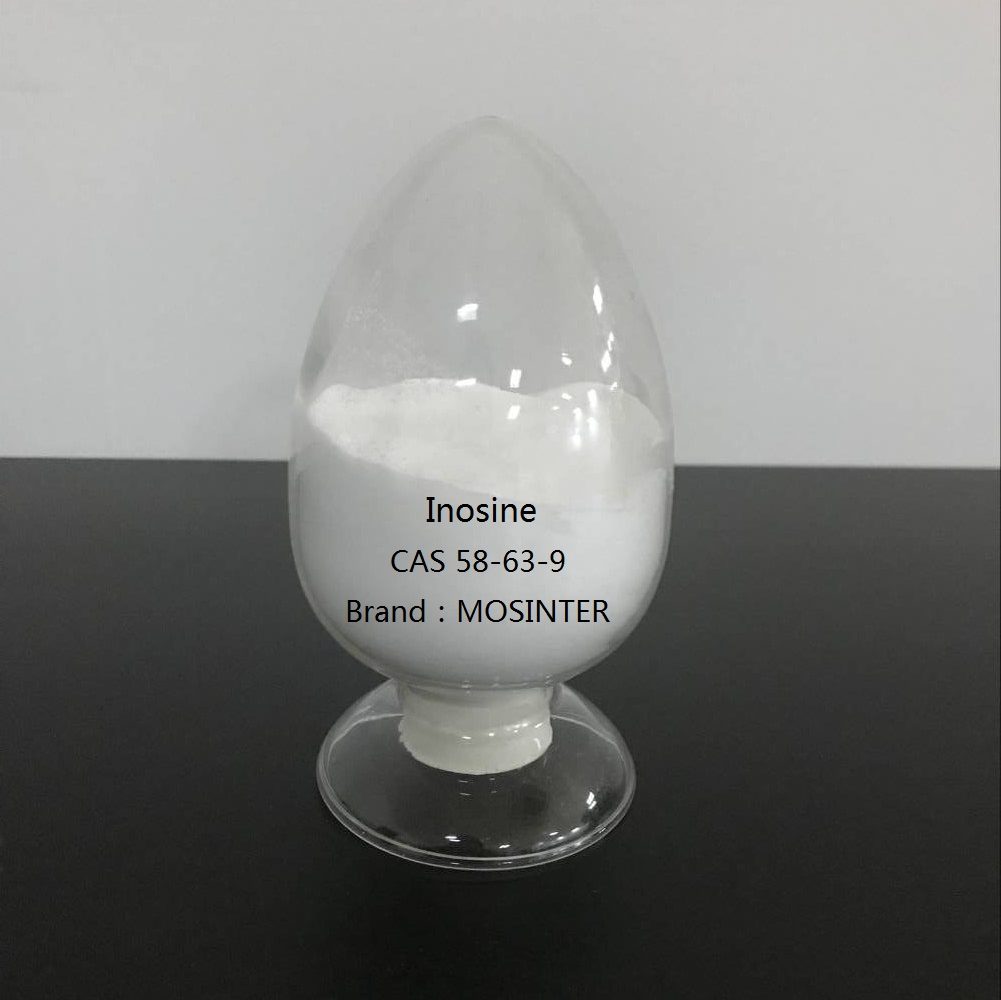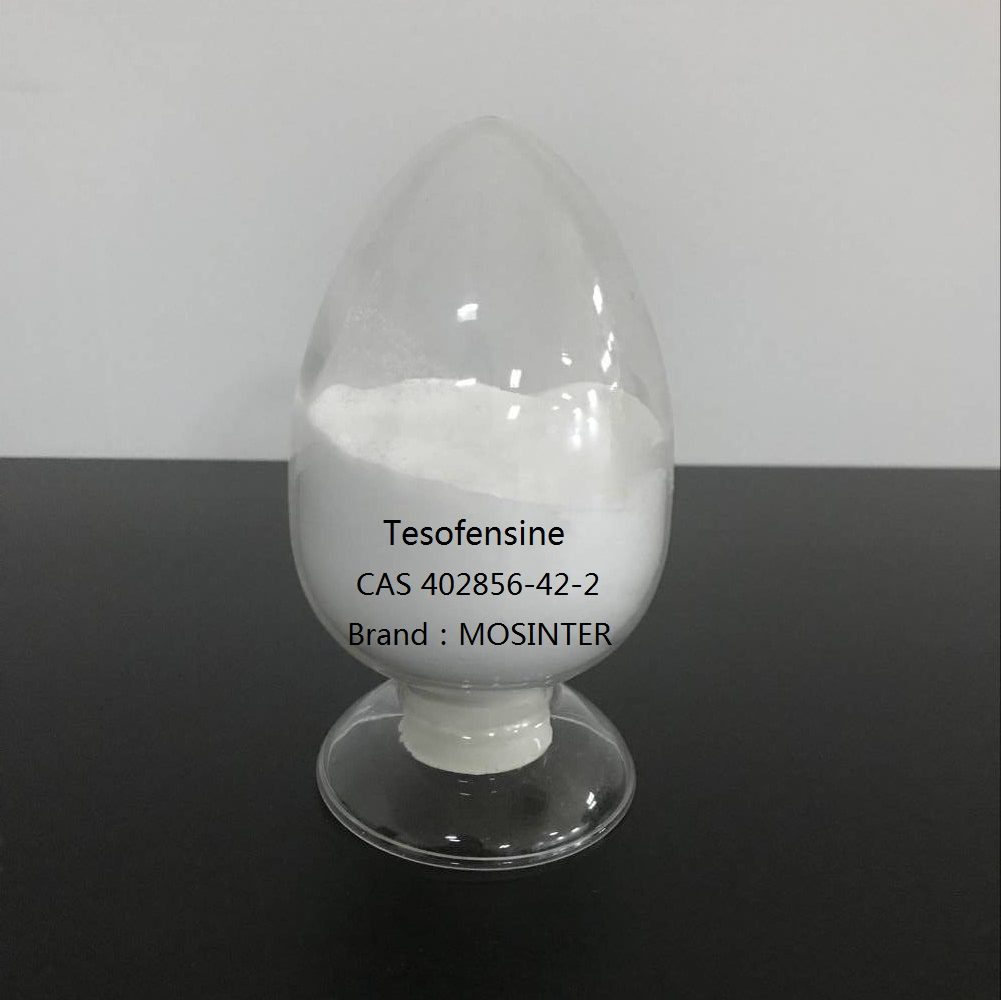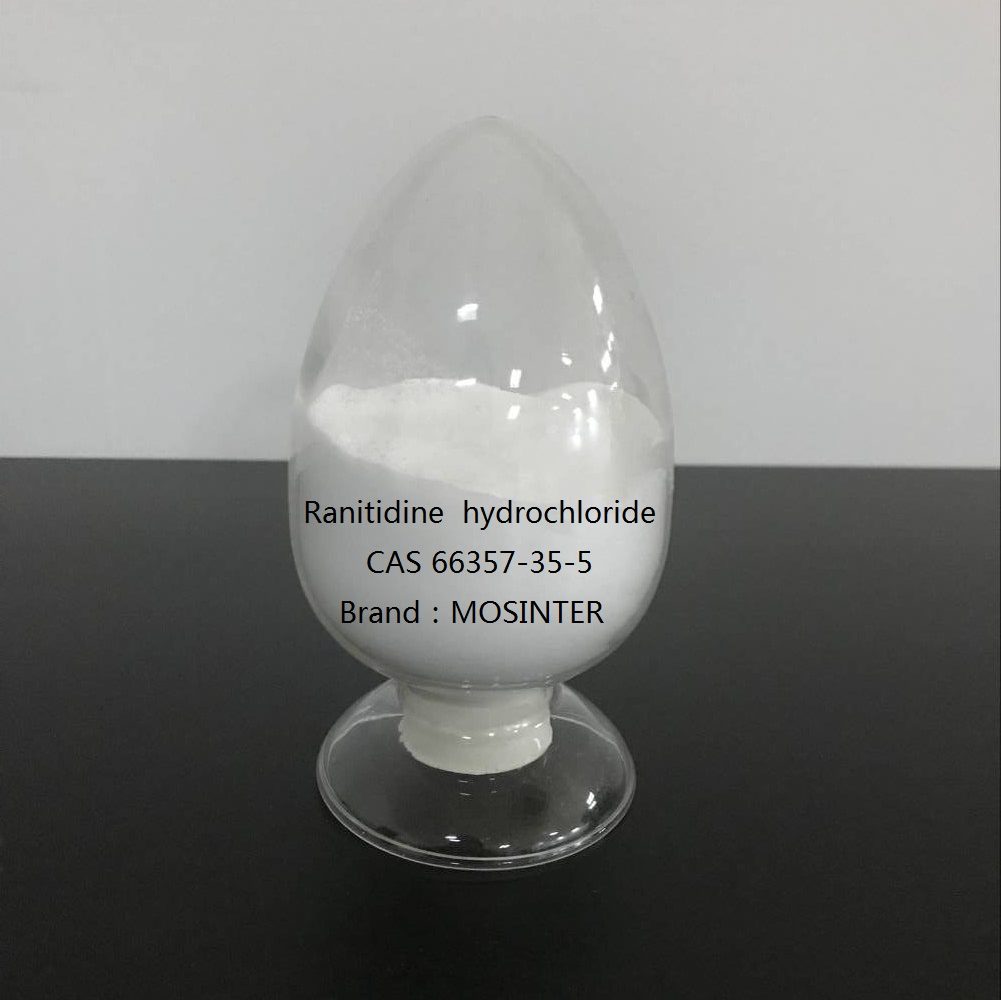| Model: | MOS85-61-0 |
| Place of Origin: | Zhejiang,China (Mainland) |
| cas: | 85-61-0 |
- Have any questions?
- +86-189 8930 5995
- sales@mosinterchem.com.cn
Coenzyme a CAS 85-61-0

Inosine CAS 58-63-9
04/12/2018
Ranitidine hydrochloride CAS 66357-35-5
04/12/2018Coenzyme a(CAS: 85-61-0)
| Item | Index |
| Molecular Formula | C21H36N7O16P3S |
| Molecular weight | 767.54 |
| Specification | CP/USP/EP |
| Appearance | White to light yellow powder |
| Storage Condition | −20°C |
Coenzyme A (CoA, CoASH, or HSCoA) is a coenzyme, notable for its role in the synthesis and oxidation of fatty acids, and the oxidation ofpyruvate in the citric acid cycle. All genomes sequenced to date encode enzymes that use coenzyme A as a substrate, and around 4% of cellular enzymes use it (or a thioester, such as acetyl-CoA) as a substrate. In humans, CoA biosynthesis requires cysteamine, pantothenate, andadenosine triphosphate (ATP).
Biosynthesis
In all living organisms, Coenzyme A is synthesized in a five-step process that requires four molecules of ATP, from pantothenate and cysteine:
Pantothenate (vitamin B5) is phosphorylated to 4′-phosphopantothenate by the enzyme pantothenate kinase (PanK; CoaA; CoaX)
1.A cysteine is added to 4′-phosphopantothenate by the enzyme phosphopantothenoylcysteine synthetase (PPCS; CoaB) to form 4′-phospho-N-pantothenoylcysteine.
2. PPC is decarboxylated to 4′-phosphopantetheine by phosphopantothenoylcysteine decarboxylase (PPC-DC; CoaC)
3. 4′-phosphopantetheine is adenylylated to form dephospho-CoA by the enzyme phosphopantetheine adenylyl transferase (PPAT; CoaD)
4. Finally, dephospho-CoA is phosphorylated to coenzyme A by the enzyme dephosphocoenzyme A kinase (DPCK; CoaE).
Enzyme nomenclature abbreviations in brackets represent eukaryotic and prokaryotic enzymes respectively. In some plants and bacteria, including Escherichia coli, pantothenate can be synthesised de novo and is therefore not considered essential.
Discovery of structure
The structure of coenzyme A was defined in the early 1950s at the Lister Institute, London, together with other workers at Harvard Medical School and Massachusetts General Hospital.
Function
Since coenzyme A is, in chemical terms, a thiol, it can react with carboxylic acids to form thioesters, thus functioning as an acyl group carrier. It assists in transferring fatty acids from the cytoplasm to mitochondria. A molecule of coenzyme A carrying an acetyl group is also referred to as acetyl-CoA. When it is not attached to an acyl group, it is usually referred to as ‘CoASH’ or ‘HSCoA’.
Coenzyme A is also the source of the phosphopantetheine group that is added as a prosthetic group to proteins such as acyl carrier protein and formyltetrahydrofolate dehydrogenase.
You must be logged in to post a review.





Reviews
There are no reviews yet.